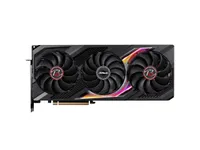Is an AMD Radeon RX 7900 XT for $820 actually a good deal? That is debatable. But one thing's for sure. It's well under the board's $899 recommended retail price.
In pure raster terms, the 7900 XT has the edge. But when you take into account ray-tracing, that tips the scale in betdog the Nvidia card's favour.
Now, you might argue sbfplay that ray-tracing has yet to become a really compelling feature. For sure, it's often hard to tell when it has been enabled. But then what about Nvidia's DLSS?
When it comes to upscaling, we'd say DLSS retains a slight image quality advantage of AMD's latest iteration of FSR. If that's a fairly close ufa747 call, you then have to factor in the new frame generation technology in DLSS.
For now, AMD has no answer to frame generation, though it claims to have a response in the works. As ever then, it's that pesky wider Nvidia feature set that makes its GPUs so compelling.
On the one hand, the 7900 XT is more the bona fide high-end GPU, based as it is on AMD's biggest graphics chip, known as N31, anmd sporting 20GB of VRAM. By comparison, the 4070 Ti is actually based on Nvidia's third-tier AD104 GPU. It's miuch smaller than the AD103 chip in the RTX 4080, let alone the AD102 monster in the the RTX 4090.
So, you're getting more hardware for your money with the AMD option, but arguably a better immediate experience with the Nvidia card. It's a really tough call. We'd lean toward the Nvidia option for all those features, but always with a sliver of doubt that the AMD card might sometimes have been the better choice.
